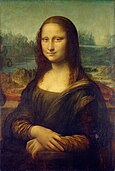User:Normxxx
'Please leave any messages on my discussion page.'
| This is a Wikipedia user page.
If you find this page on any site other than Wikipedia you are viewing a mirror site. Be aware that the page may be outdated, and that the owner of this page may have no personal affiliation with any site on which displayed other than Wikipedia itself. The original page is located at |
 |
Background
Airship-skyship600.jpg
|
| Wikipedia:Babel | ||
| ||
| Search user languages |

About me
[edit]Major contributions
[edit]Articles on which I've done a significant amount of work.
- Acceptance test
- Adverse selection
- Analog computer
- Architecture and Architecture (disambiguation)
- Automation
- Catastrophic failure
- Computer software
- Corporate governance
- Cost/benefit analysis
- Data Processor
- Deadlock
- Deflation (economics)
- Engineer
- Engineering
- Event handler
- Exclusive
- Exhaust
- HOL
- Hybrid computer
- Inclusive
- Insourcing
- Interface Control Document
- Interrupt handler
- KISS principle
- Mind-body problem
- Object-oriented programming
- Operational definition
- Paleolithic
- Process (computing)
- Reentrant
- Social progress
- Software architect
- Software architecture
- Solipsism
- Specification
- Stand-alone
- Stock exchange
- Stock Market
- System
- Systems engineering
- Technician
- Technology
- Thrash (computer science)
- Work-around
Articles I've created
[edit](This section does not include redirect pages.)
- Hardware architect
- Hardware architecture
- Systems architect
- Systems architecture
- Wikipedia:Starter toolset
Major Interests
[edit]- Philosophy of science
- Philosophy of physics | Interpretation of quantum mechanics | Philosophy of space and time
- Philosophy of biology | Anthropology
- Securities market trading
- Opera, Folk music, Operetta, musical theater, popular vocals (especially from the '20s, 30's, 40s, and 50s)— all forms of sung music that have a pleasant melody (even some rock music).
Featured Article of the Day
[edit]The Turabay dynasty was a family of Bedouin emirs who governed the district of Lajjun in northern Palestine during Ottoman rule in the 16th–17th centuries. The family's forebears had served as chiefs of Jezreel Valley during Mamluk rule in the late 15th century. During the Ottoman conquest of the region in 1516–1517, the family aided Ottoman sultan Selim I. The Ottomans kept them as guardians of the strategic Via Maris and Damascus–Jerusalem highways and rewarded them with tax farms. Although in the 17th century several of their emirs lived in towns, the Turabays largely remained nomads, camping with their tribesmen near Caesarea in the winters and the plain of Acre in the summers. The eastward migration of their tribesmen to the Jordan Valley, Ottoman centralization, and falling tax revenues brought about their political decline and they were permanently stripped of office in 1677. Descendants of the family continue to live in the area. (Full article...)
Tip of the Day
[edit]Featured Anniversaries
[edit]- 1689 – Jacobite clans clashed with a regiment of Covenanters in the streets of Dunkeld, Scotland.
- 1789 – The national colours of Italy first appeared on a tricolour cockade in Genoa.
- 1911 – Leonardo da Vinci's Mona Lisa (pictured) was stolen from the Louvre by museum employee Vincenzo Peruggia and was not recovered until two years later.
- 1944 – World War II: A combined Canadian–Polish force captured the town of Falaise, France, in the final offensive of the Battle of Normandy.
- 2007 – BioShock was released in North America, becoming a critical success and a demonstration of video games as an art form.
- Alphonse, Count of Poitiers (d. 1271)
- Lady Mary Wortley Montagu (d. 1762)
- Thomas S. Monson (b. 1927)
- Frederick Seguier Drake (d. 1974)
Picture of the Day
[edit]
| Multi-licensed into the public domain | ||
| I agree to multi-license my eligible text contributions, unless otherwise stated, under Wikipedia's copyright terms and into the public domain. Please be aware that other contributors might not do the same, so if you want to use my contributions in the public domain, please check the multi-licensing guide. | ||
| All rights released to all text | |
|---|---|
| I agree to release all rights, unless otherwise stated, to all my text contributions to the English Wikipedia, enabling anyone to use them for any purpose. Please be aware that other contributors might not do the same, so if you want to use my contributions under free use terms, please check the Multi-licensing guide. | |





